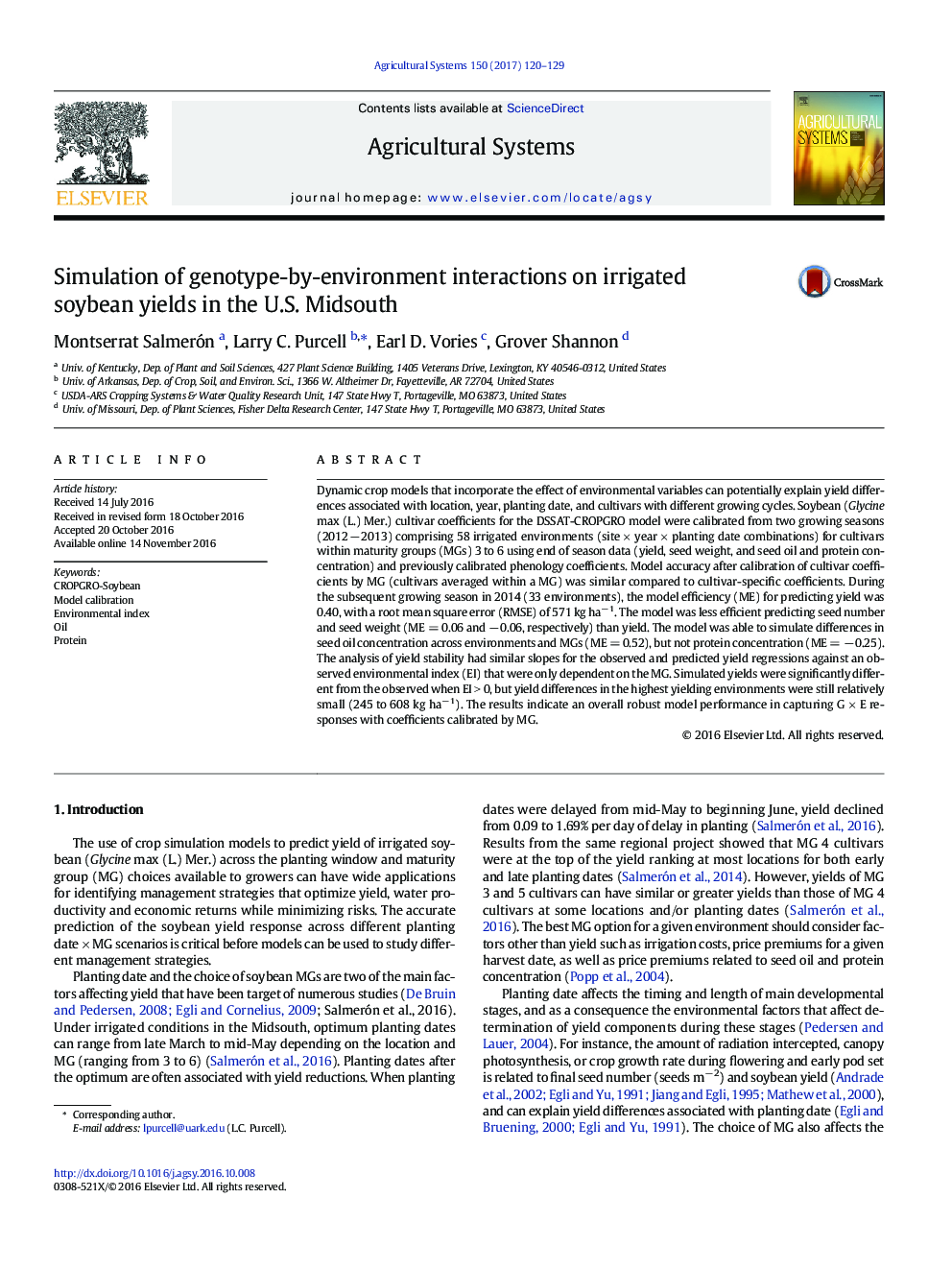| Article ID | Journal | Published Year | Pages | File Type |
|---|---|---|---|---|
| 8875123 | Agricultural Systems | 2017 | 10 Pages |
Abstract
Dynamic crop models that incorporate the effect of environmental variables can potentially explain yield differences associated with location, year, planting date, and cultivars with different growing cycles. Soybean (Glycine max (L.) Mer.) cultivar coefficients for the DSSAT-CROPGRO model were calibrated from two growing seasons (2012 â 2013) comprising 58 irrigated environments (site Ã year Ã planting date combinations) for cultivars within maturity groups (MGs) 3 to 6 using end of season data (yield, seed weight, and seed oil and protein concentration) and previously calibrated phenology coefficients. Model accuracy after calibration of cultivar coefficients by MG (cultivars averaged within a MG) was similar compared to cultivar-specific coefficients. During the subsequent growing season in 2014 (33 environments), the model efficiency (ME) for predicting yield was 0.40, with a root mean square error (RMSE) of 571 kg haâ 1. The model was less efficient predicting seed number and seed weight (ME = 0.06 and â 0.06, respectively) than yield. The model was able to simulate differences in seed oil concentration across environments and MGs (ME = 0.52), but not protein concentration (ME = â 0.25). The analysis of yield stability had similar slopes for the observed and predicted yield regressions against an observed environmental index (EI) that were only dependent on the MG. Simulated yields were significantly different from the observed when EI > 0, but yield differences in the highest yielding environments were still relatively small (245 to 608 kg haâ 1). The results indicate an overall robust model performance in capturing G Ã E responses with coefficients calibrated by MG.
Related Topics
Life Sciences
Agricultural and Biological Sciences
Agricultural and Biological Sciences (General)
Authors
Montserrat SalmerÏn, Larry C. Purcell, Earl D. Vories, Grover Shannon,
